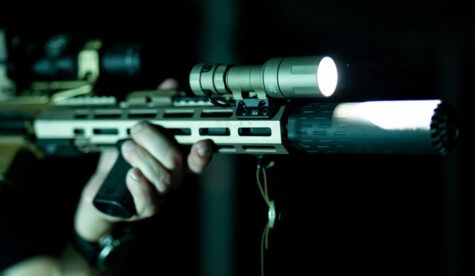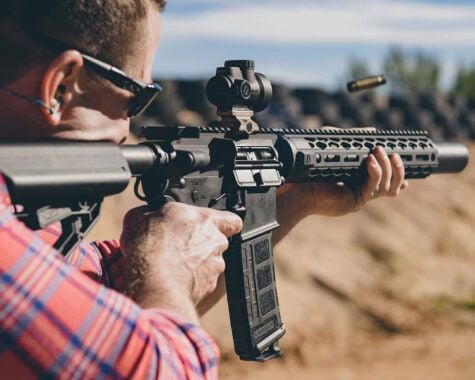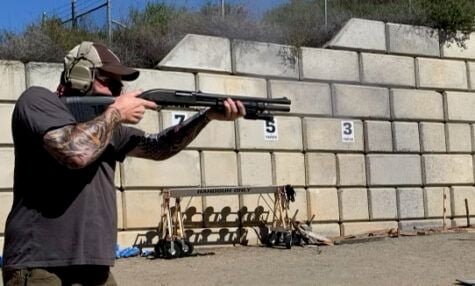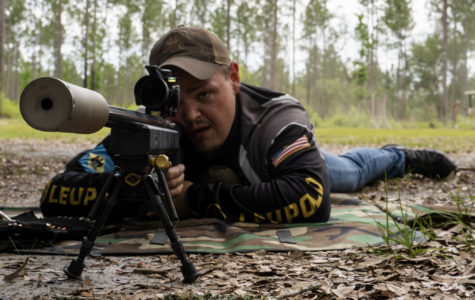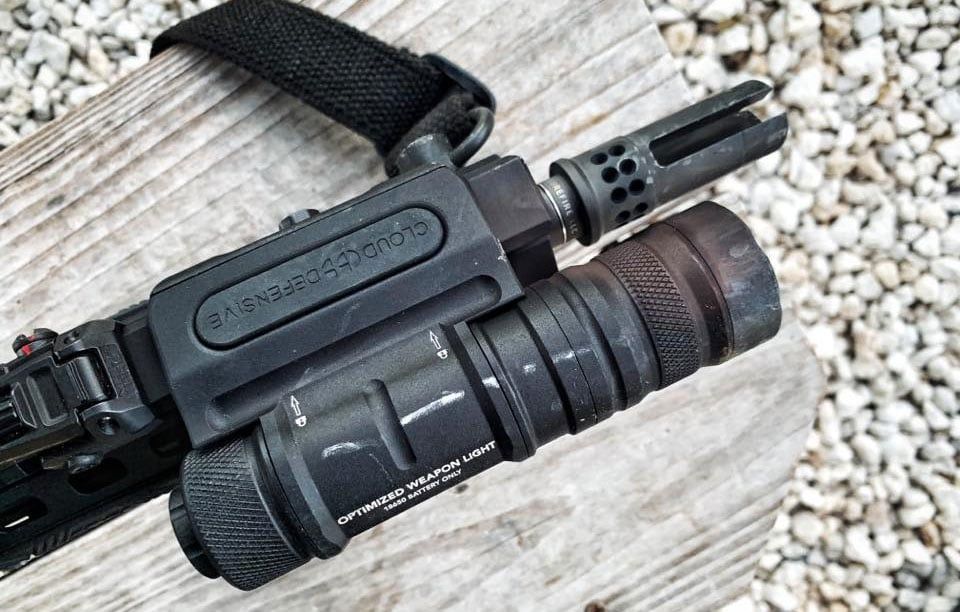
The Cloud Defensive OWL (Optimized Weapon Light) has been one of the most anticipated new weapon lights we’ve seen in recent years. The estimated 1,250 lumen, 50,000 candela light is fully ambidextrous, robustly built, and powerful…Designed specifically to compliment rifles.To learn more about the design and the ideas behind the OWL, we reached out to Matt Tenbarge, co-owner of Cloud Defensive.
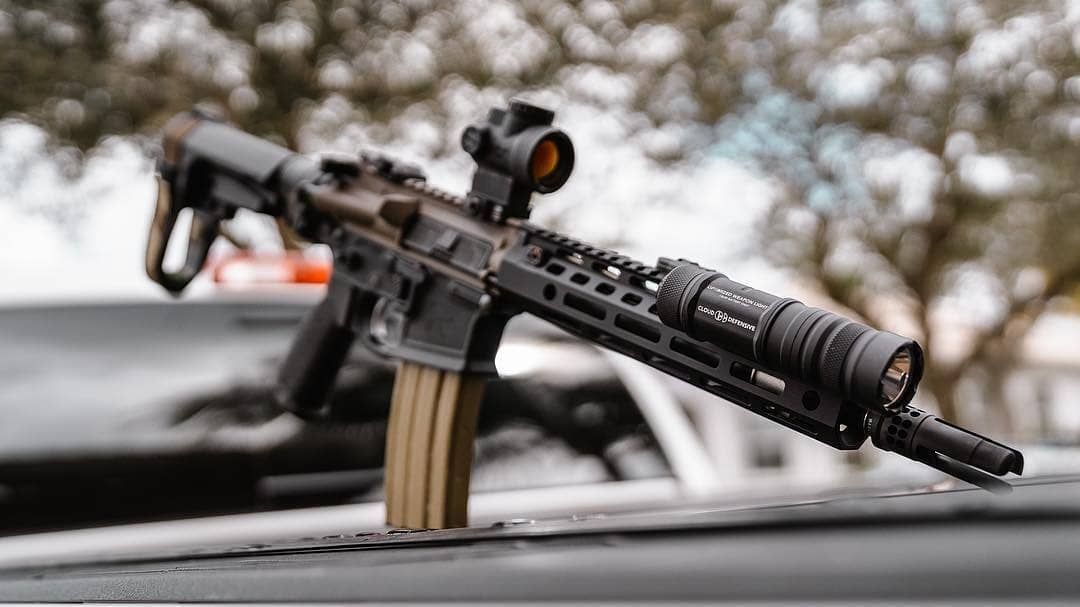
Q: Matt, can we start with who you are? Perhaps talk a little about Cloud Defensive for those who might not be familiar?
Matt Tenbarge, Cloud Defensive: I’m Matt Tenbarge and I’m one of the owners of Cloud Defensive. My official title would be Head of Product Development for Cloud Defensive. My goal is simply to develop new products and bring them to market to optimize specific parts of a weapon.
Many of your readers are probably familiar with the Optimized Weapon Light (OWL), and where that came from was just us fixing and bringing something to market that wasn’t available at the time. Cloud Defensive prides itself on being sort of an “optimizing company.”
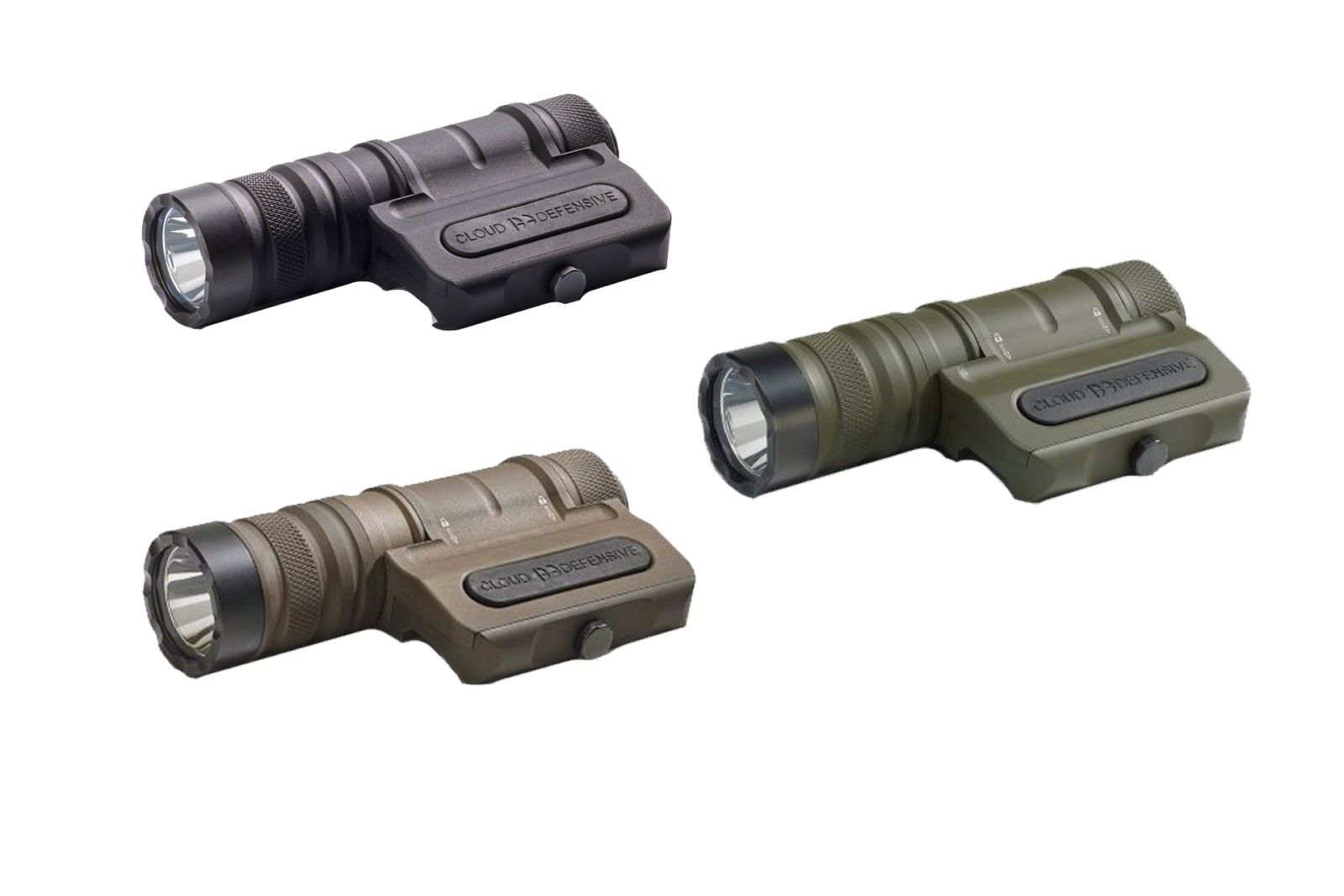
Cloud Defensive Optimized Weapon Light (OWL)
Improving on Specific Areas
So, we directly attack and try to improve on a specific area on the weapon platform…whether it is the Optimized Weapon Light (OWL), which integrates the pressure switch into the light itself in a form that really hasn’t been done before.
Then there’s the Cloud Defensive COR or the Cloud Optimized Rail, which is us recessing lights into the rail to allow for more ergonomic hand positioning. There are also some other things we are working on as well, and with these products we are again directly going after something we feel is either lacking or an end-user issue on the product itself.
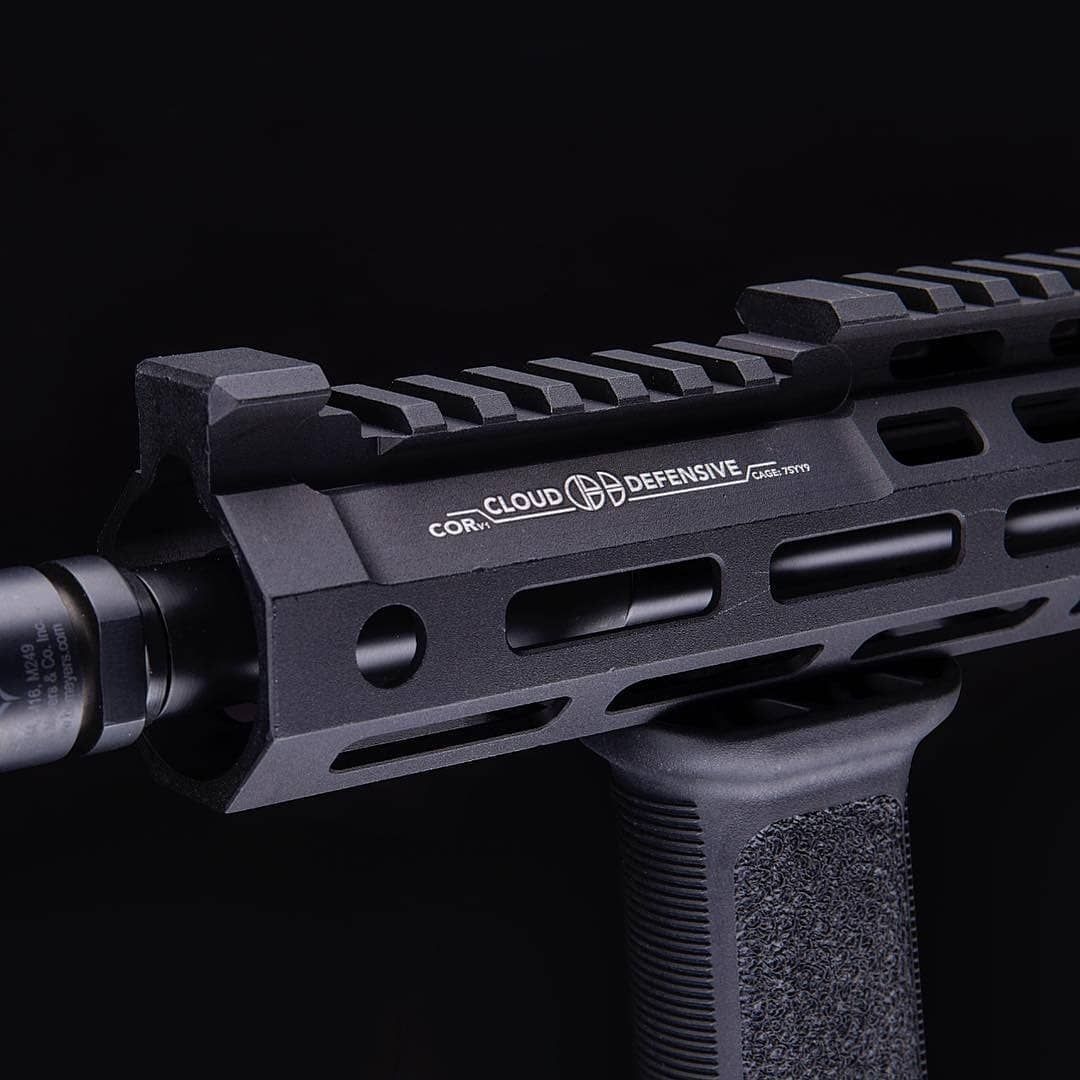
Cloud Defensive 9.55″ Optimized Rail
Q: Cloud Defensive had been making products prior to the OWL. Can you talk about your first product and how that came about?
Matt Tenbarge, Cloud Defensive: Cloud Defensive dropped our first product back in October of 2016, which was the Light Control System. That’s a product that allows you to hard-mount your switch with existing lights on the market.
That product just came from the frustration of using zip-ties and tape and the frustrations that come with the switch coming loose, or coming off during training or direct action. There was also the lack of ability to control your cable. You have this cable coming off of your light going to the switch, and it’s just kind of hanging there.
So at Cloud Defensive, we really focused on how do we take the light as it is now, and put it into more of an end-user friendly set-up, by controlling the cable, and allowing you to attach the switch directly to the mount so it’s not going to move around on you.
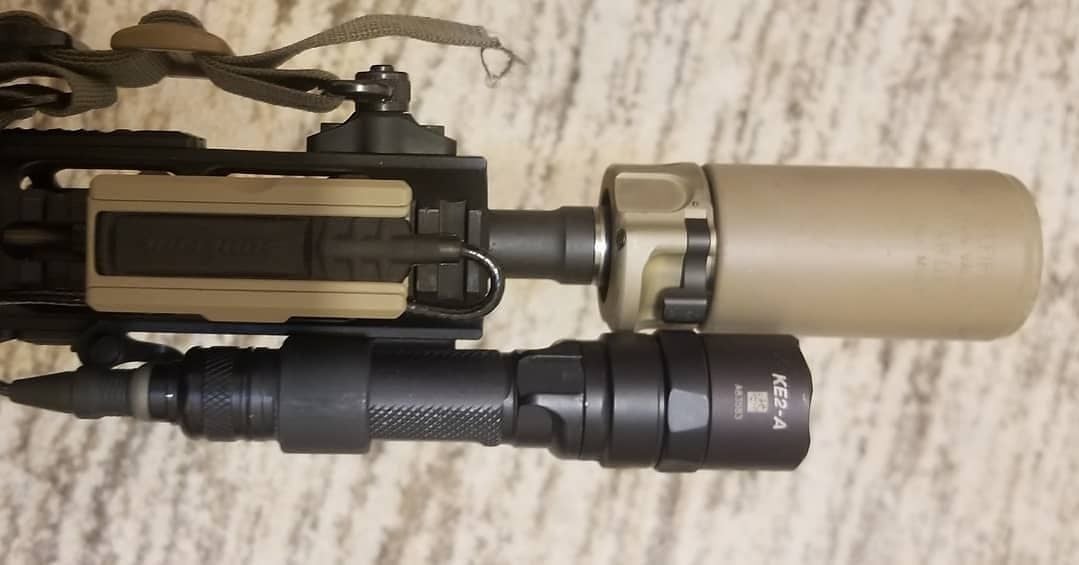
Anyway, that’s where the idea for the Light Control System came from. Sean and I, (Sean my business partner)…we were just fed up with what the current setups were. We asked ourselves how we could fix it, and came up with the Light Control System…one for the Streamlight, one for the Surefire.
Then we were messing with the MCH, which is our Mission Configurable Heads, which were our upgraded heads for Surefire Scouts that were currently on the market. And as we went down that road, we realized we wanted to make our own light, and that’s what we decided to do. We took everything we were working on, put it into a one-piece solution, and that’s where the OWL came from.
Q: What were the initial conversations about the OWL like?
Matt Tenbarge, Cloud Defensive: When we sat down and decided what to do with the OWL, we certainly could have just brought a traditional light to the market. We could have just said “hey, let’s just make the same light that has been done multiple times, but just put our twist on it.” But, that’s not what Cloud Defensive is.
Instead, we sat down with a dry erase board, and wrote down everything that we wanted the OWL to do. We wanted the performance, mounting capabilities…we wanted the end user to be able to go either left and right with it. Thinking about those things then led us to start branching off with more and more.
Q: Can you talk a bit about what you wanted from the OWL, performance wise?
When we started to focus on performance…well, we know everybody is always talking about “the lumens, the lumens, the lumens” which is very true. You need to get lumens out of the light, but what was lacking was the ability to put that light further than what you need.
This is a rifle-mounted light. Why are we not able to see at rifle distance? So, Sean and I spent a lot of development time on how to put the light where we want it to go…how do we get intermediate spill? How do we create this complete package?
Everything In-House
And, at the end of the day the OWL answers a lot…but it’s not the final solution. It does lack in a few things as far as performance goes, but we sacrificed overall spill to gain throw. We developed the reflectors and did everything we did in-house…we spent a lot of time just in reflector development. What we didn’t do is take an off-the-shelf reflector, or take off-the-shelf components.
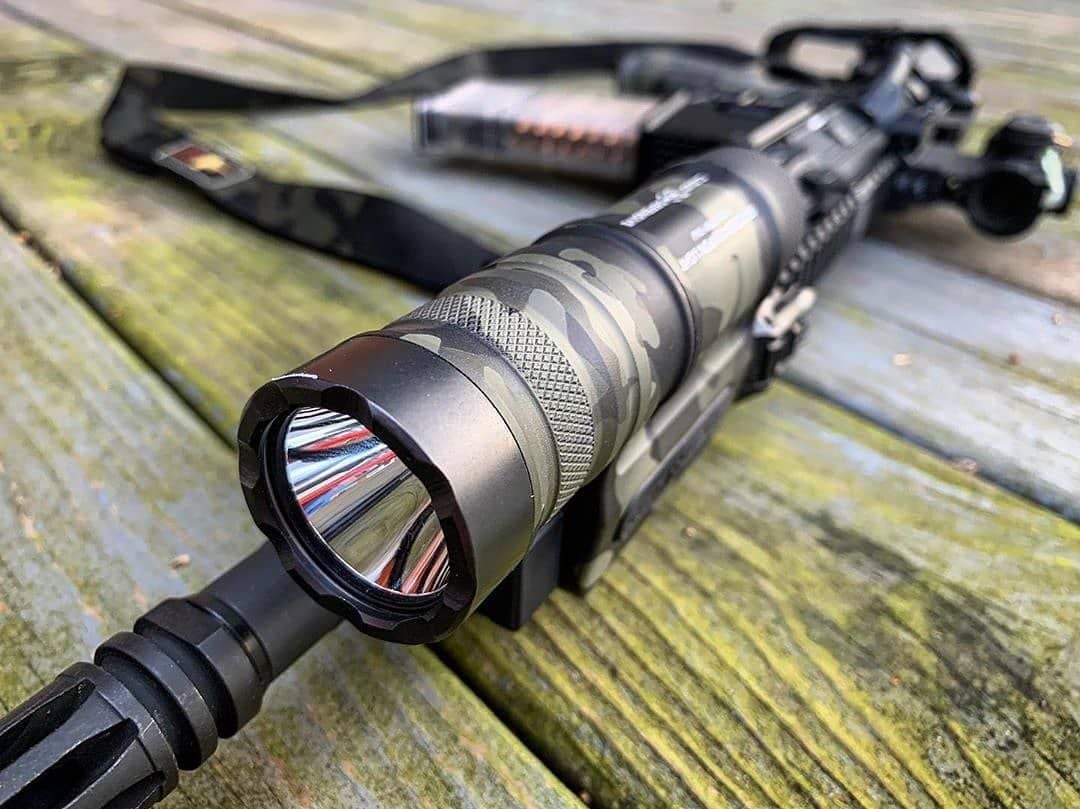
Q: Can you talk a bit about the difficulty that entails…when you decide to not settle for an off-the-shelf solution to an issue?
Matt Tenbarge, Cloud Defensive: We did everything we could to bring the best thing we could to market…and we really tried to focus on the candela side of things, which is the concentration of light, versus just the overall intensity of the emitter, which is where the lumens versus candela conversation comes in. So, once we addressed candela, we then really took a deep dive into just how does light work, why does it do what it does…and we found there is just a huge misperception on what a good performance light is.
“It’s Made By Us in Southern Indiana”
It’s also worth mentioning we’d never built a weapon light. We did the MCH heads, but we were never indoctrinated in how traditional weapon lights were built. We had to learn quickly and we did. In doing so, we were able to identify ways that we could improve the system and make it more robust. That means you’re not buying stuff off-the-shelf. Instead we put the systems in place within our facility to manufacture them. Everything from the reflector design to the entire electrical system…it’s made by us in southern Indiana.
The challenge then becomes trying to build the light, get it on the market in a reasonable amount of time, and look at all the components and costs involved and making sure we’re not wasting time and money. We’re a young company and we are learning. And it was a School of Hard Knocks sometimes…but we got through it. And in the process we learned how to build one hell of a weapon light.
Q: Can you talk about how you came up with the cost of your light?
For quite a while we’ve been joking this is our $600 light that we’re going to be selling for about $400 dollars. Just knowing everything that went into it…from cost of development, cost of production…and to just the fact that it outperforms everybody else and is capable of doing things that others are not. It lends itself to a premium price point. But we’re still consumers. We still buy all of our gear and we just hate getting nickel and dimed or price-gouged. In the end, we want it to get out there and have people use it…we also want to serve the law enforcement community. I want to offer the best possible product to those guys, and we would just never price-gouge anybody like that.
The other thing we looked at was the cost of a Surefire Scout light. to be honest. It comes in cheaper than the OWL by itself, but when you add in the dual tape switch, probably an M-LOK mount, maybe an LCS to support it…you’re looking at at easily $450 dollars. We wanted to come in and price it lower, and incentivize people, not just from a price point, but also from a list of features and capability…
Q: Can you talk about the decisions you made as far as having the Cloud Defensive OWL have integrated switching?
Matt Tenbarge, Cloud Defensive: A lot of guys have issues setting up their lights the way they need to. You have wires hanging off of different areas, you have bad switch positionings, you have a bunch of stuff going on. So we decided to interface it at the top. We put the switch directly on the body at 12 o’clock which is where a lot of guys are running their hand position…so it’s optimized for that. There’s no cables to snag or switches to mount. It’s all right there…
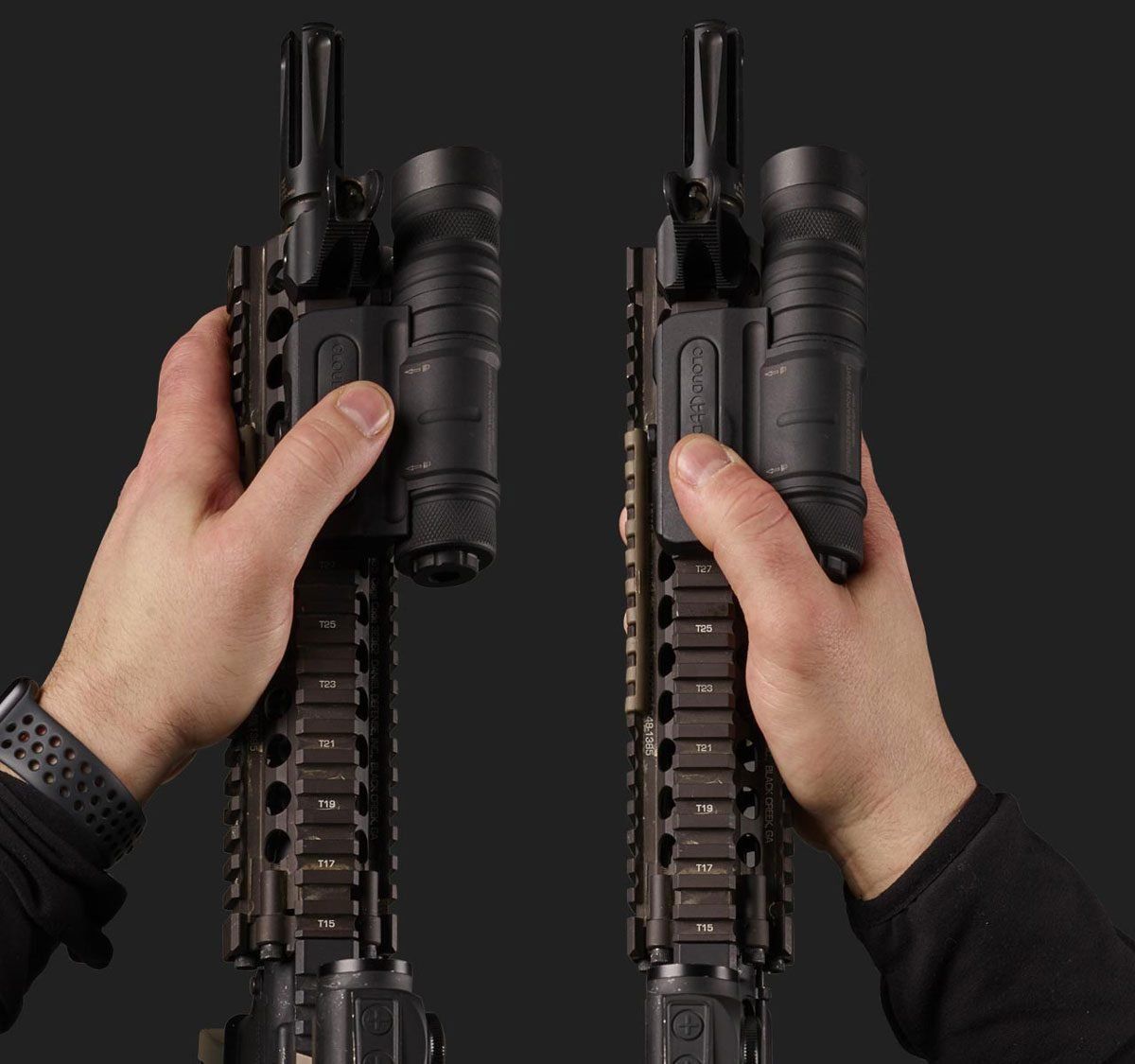
OWL: Reaching Out to Rifle Distances
The big plus for the OWL versus other things out there on the market right now is that it was specifically designed for the rifle and it has the ability to reach out at rifle distance. That’s where we really spent a lot of our time.
We had pictures where we’re getting light on target at 400 plus yards…you’re not necessarily going to get PID (positive identification) at that distance, but we’ve had professional users do testing come back and tell us they are comfortable taking shots at 200 yards with the OWL. They have confirmation on PID and they’re willing to take a shot at that distance…and that’s something that had not really been done a whole lot in the market.
Our end goal was to create a light that a patrol guy can grab, take out of the box, put it on the gun and they are ready to roll…whether they are left or right handed.
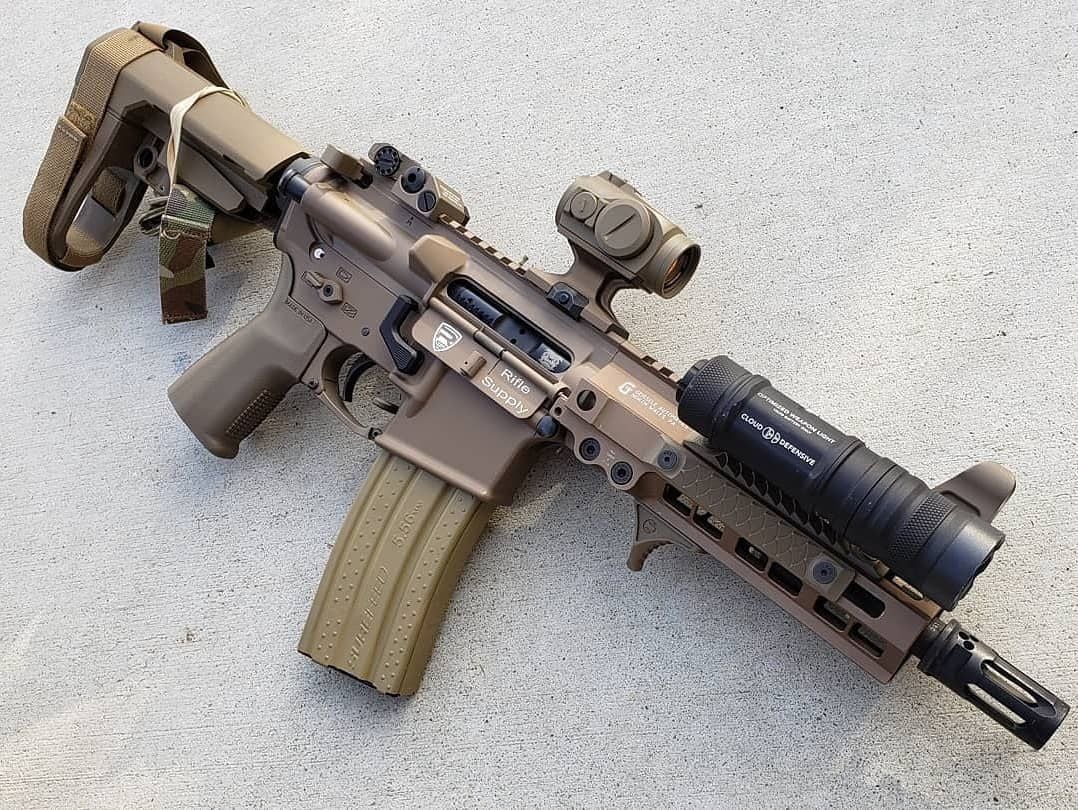
Designed for the Majority
I know there have been conversations that it does not interface with IR systems…but this light was never designed for that, and we’ve tried to make that clear from the very beginning. This is a rifle light, designed for the majority of people for duty or home defense who do not run IR systems. We knew that going into it…That’s why I say it’s not the final solution for everything, but it works for a lot of guys who just want the features it provides.
Q: Can you talk about some of the things you feel make the Cloud Defensive OWL somewhat unique in the industry right now…perhaps in regards to how the light performs in adverse environments?
Matt Tenbarge, Cloud Defensive: Certainly. The old saying is you can’t shoot what you cant see. Are you willing to take a shot on something that you think is a threat? You’ve got to be 100 percent sure before you take that shot.

So, that’s where some other lights have really good spill…you go into a room and you’ve got a ton of light in that 20 foot area. But once you go out on the streets, and you have street lights, other lights…say you’re in a parking lot, where you have lots of lights but then dark spots in between you and target…what happens is your light is absorbed by the ambient lighting. You’re not driving through those lights.
But with the OWL, you can put multiple levels of light between you and your target and you’re still going to be able to drive though those and put light on a target.
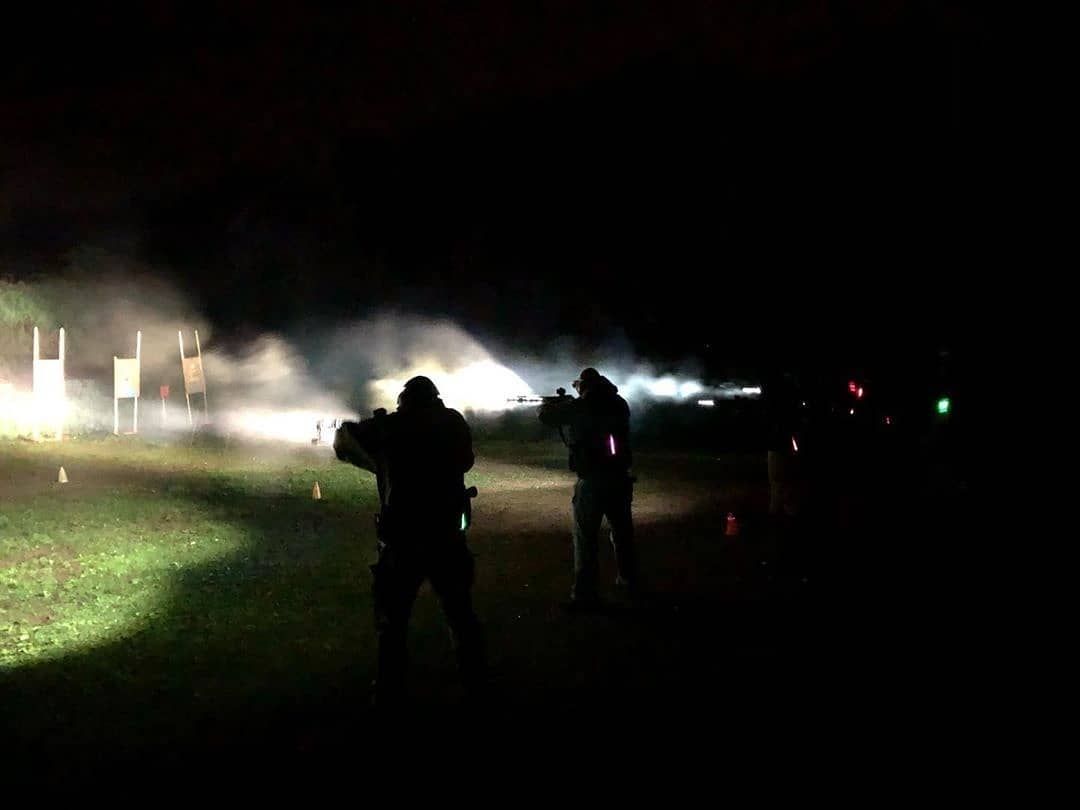
It’s the same with smoke and fog. Your light is actually being absorbed…your emitter is throwing out an amount of light and it’s being reflected right back into your face instead of driving through it and seeing your target.
We did a cold night class recently and guys were having a lot of trouble seeing their targets at 100 yards. Several of the people made comments that they were waiting for someone to turn an OWL on so that they could see the targets. (laughs). And they had lights that perform very well otherwise, but once you throw some smoke and some dirt in there, you lose it.
Overcoming Everything Between
It’s similar with windows…you need to see inside of a building during a stand-off, and all you get is the glare off the window, that’s not ideal. It’s the same if you’re on a traffic stop and you cannot penetrate through the window, versus shining the light and having it drive through the window so you are able to see that threat inside of the vehicle. So, a huge focus on my part was just the idea of being able to put light exactly where I needed it to go. Overcoming everything between it.
Train To Your Light
The drawback of the OWL then is you don’t get a ton of spill when you go into a room, but you can create spill with a hot spot, but you cannot create a hot spot with a spill. So, you’ve got to train to your light. If you’re going to be running an OWL in a CQB situation, you’ve got to understand that and use proper white light techniques.
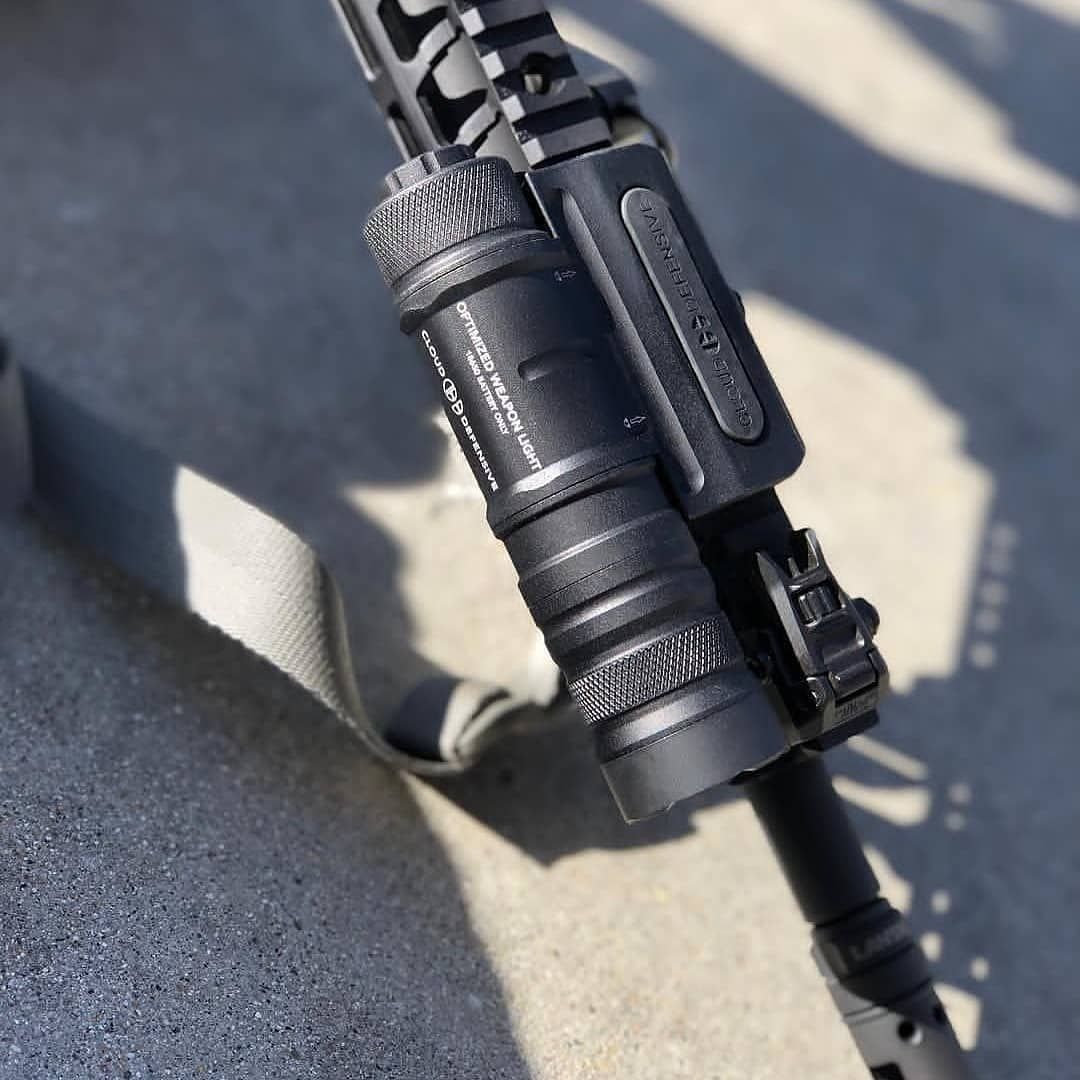
But if you’re like the majority of guys who just want to grab their rifle and they want to see what is out in front of them and they just want a lot of light on the target, that’s where the OWL has a huge advantage.
Q: Can you talk about the decisions you made as far as a warmer color temperature?
Matt Tenbarge, Cloud Defensive: You’ll notice our color temperature…the tone of the light is slightly warmer. It’s more of an amber or an orange color, versus a blue, which is cooler. We found that it really helps with photonic barriers, any type of penetration through windows…fog or any type of environmental disturbances. We really focused on that for a while.
When we started messing with the color temperatures on the OWL, we found definition on a target was also improved. If a person is wearing a black shirt versus a green shirt, you can notice that difference due to the color of the light. There’s some scales I’ve released before where it shows that a cooler light will give you a bright, intense light…but you may not be able to make the definition between a cell phone or a knife. But with a warmer light, it takes away that harsh, intense blueness and it gives you a softer light to see…you can see that it’s a phone, not a knife.
Q: Can you discuss the decision to go with the 18650 battery in the Cloud Defensive OWL?
Matt Tenbarge, Cloud Defensive: The 18650 is a very energy dense battery that facilitates the output we needed. Most people don’t know it, but an 18650 at 50 percent charge has more energy potential than two brand new CR123 batteries. So, when you think about it in those terms, it’s a dramatic improvement.
And we most certainly needed that improvement. There’s the raw lumen output at the emitter, and then there is how you capture and shape that light and put it downrange. That’s how you get the candela. Lumens and candela are absolutely correlated…we focused a lot on the candela side of things, because it’s a rifle light and we needed to push out to rifle distances, but without enough raw lumen output, it’s just not as potent.
Unprotected Cell
So, we’d hit the threshold with the CR123s. The next step was going to the 18650…but then we went through a lot of those to determine which one suited the OWL the best. We do use an unprotected cell versus protected cell. We worked a long time on the internals of the OWL to accept that, and prevent any type of thermal failure or things of that nature.
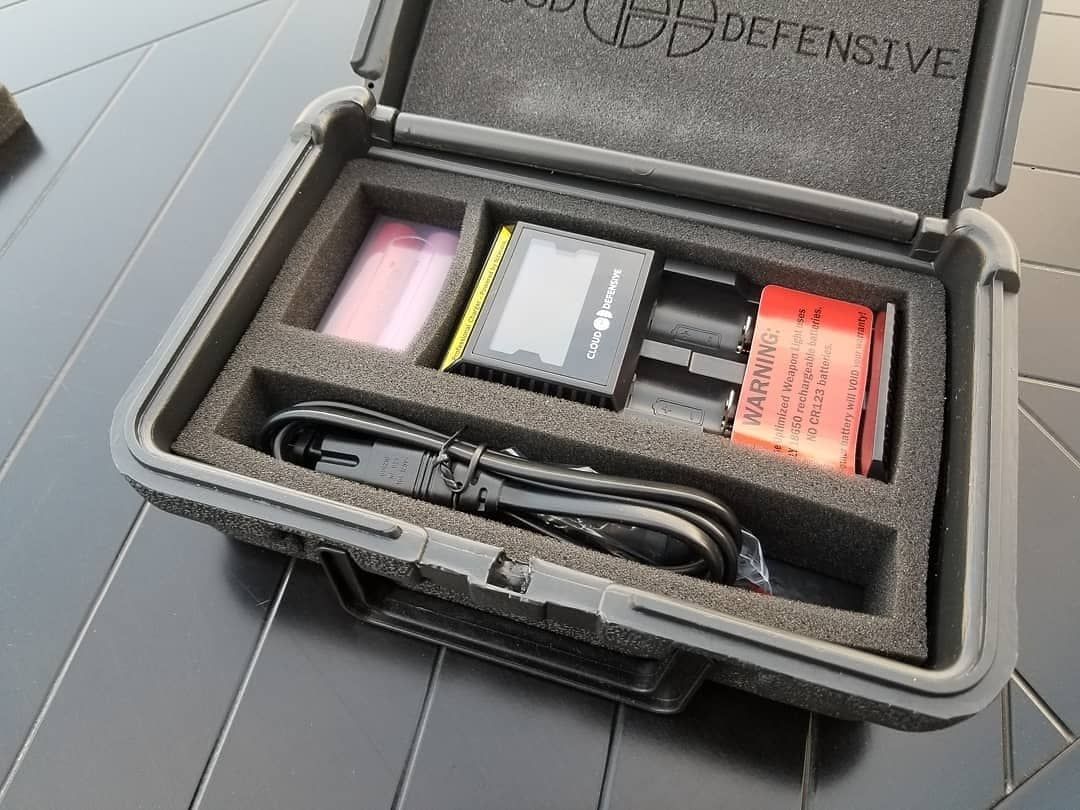
Rechargeable Savings
The other thing to consider on the rechargeable side of things is the value. If the OWL didn’t run on an 18650, it would run on two CR123s, right? If you look at the cost involved. One of our 18650s is good for somewhere between 250 and 300 deep cycles…If you did a comparable cycle count on CR123s, you’re looking at 600 batteries. If those are $1.25 a piece, you’re looking at roughly $1,000 in CR123s (laughs). Whereas you’re getting that same run time out of a single 18650 that cost you maybe nine dollars. So, there’s a tremendous economic savings and I think a lot of police departments and consumers are realizing that. They realize they are getting a ton more power and a lot more value.
When you purchase an OWL, it comes with a phenomenal Nitecore smart charger. You can throw your batteries on and you can leave them on there, because once it hits max capacity on that battery, it shuts off the circuit to that battery. Meaning you don’t overcharge it and cause failures. Then we include two batteries. One is for run-time, and the other is for output…One is a 15 amp and one is a slightly lower amp. What that does is allow you to have a longer run time on it.
Q: Can you talk about how the Cloud Defensive OWL can handle heat and abuse?
Matt Tenbarge, Cloud Defensive: We did a ton of testing with suppressed guns for that reason. We have some videos where we fried two cans…the gas tube was glowing, cans were glowing and the OWL was still performing. In fact, you could grab the body of the OWL with bare hands, where if you grabbed the rail, your hand would be cooking. A part of that is just the design of the heat sink…everyone complains about the OWL being big and bulky, and the thing is big…let’s just be honest.
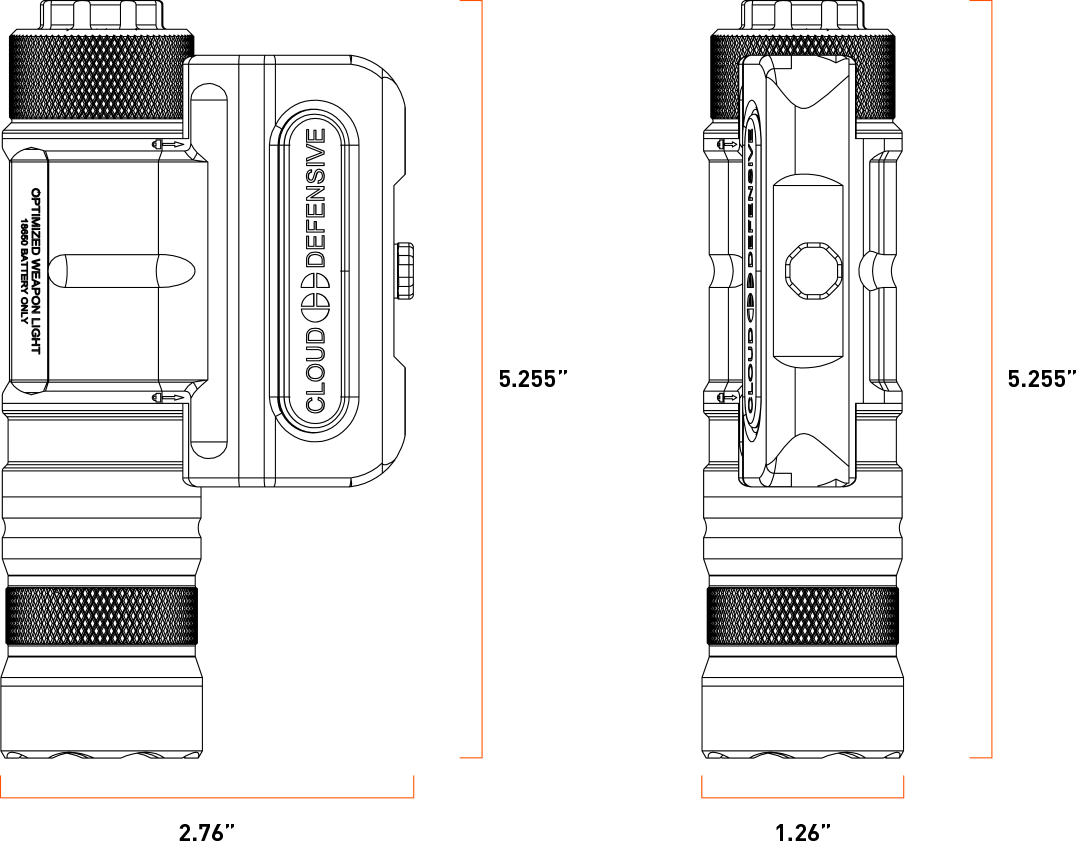
Now, we did try to reduce as much weight and materials as we could without causing a failure at some point. But that also gives us the heat sink where when it does get hot, you’re not getting flickering and you’re not getting battery shut off…because it’s absorbing the heat the way it needs to.
So, you’ll see guys with other lights say “I ran my light for 30 minutes straight…it starts flickering or it goes from a decent amount of output to real low.” Well that’s the battery and the driver basically saving itself from frying.
At Cloud Defensive, we didn’t want to accept that. The amount of time we spent on this was amazing. I wish you could see the scrap pile we have of just parts that we fried or beat to hell to find their failure points…so that when the OWL finally went to market, the end-user is not going to experience these failures.
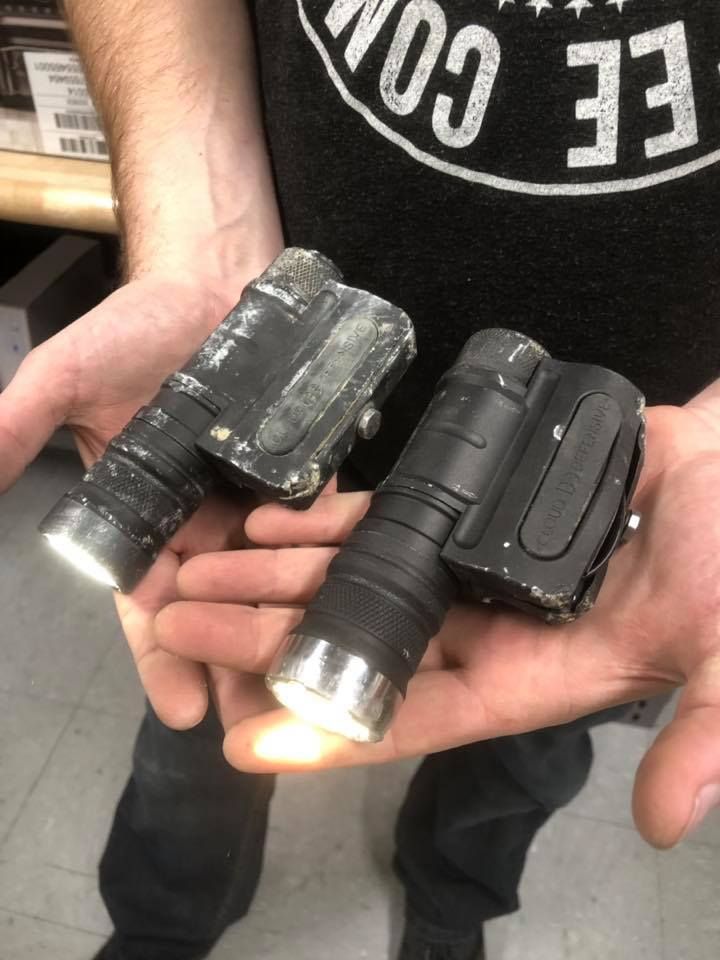
Cloud Defensive – Completing the Job
The last thing I can live with is some guy having to use his light and it shuts off, for whatever reason. If that happens, we’ve not done our job. That job was to develop a light capable of performing in every condition possible and giving the best performance and completing the job at hand, whatever that may be. Thankfully…With the OWL, I think we have done that.
###
